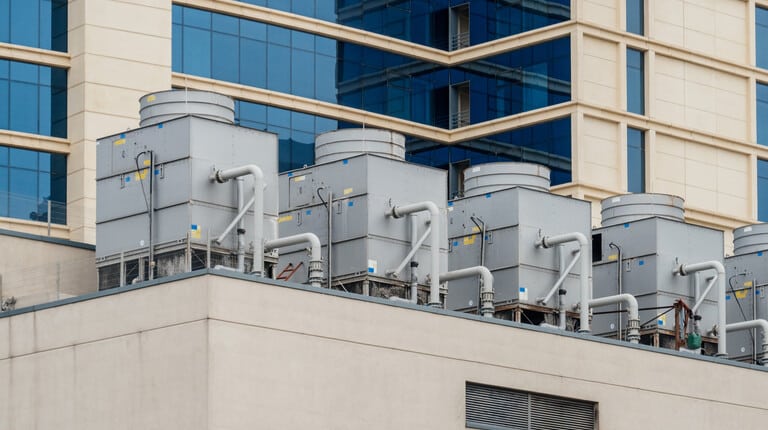Upcoming Title 24 Changes: Impacts on Commercial HVAC Upgrades
As California pushes forward with ambitious goals for energy efficiency and reduced emissions, commercial building owners and managers are gearing up for the latest round of updates to the state’s Building Energy Efficiency Standards, known as Title 24. Set to take effect on January 1, 2026, these revisions aim to make structures more sustainable while addressing climate challenges head-on. For those in the HVAC space, this means new opportunities—and requirements—for upgrades that prioritize high-performance systems. At Air-Tro, Inc., we’re already helping clients adapt, ensuring their facilities stay compliant, cost-effective, and comfortable.
The 2025 standards build on previous codes by emphasizing cleaner technologies and smarter energy use in nonresidential buildings like offices, retail spaces, schools, and libraries. With energy costs on the rise and incentives available for green retrofits, understanding these shifts can turn compliance into a strategic advantage, potentially saving thousands in operational expenses over time.
What Are the Key Title 24 Changes for Commercial Buildings?
The California Energy Commission has rolled out updates that touch on everything from new construction to alterations in existing properties. At their core, these changes promote heat pumps and efficient controls to cut down on fossil fuel reliance and boost overall performance. For instance, the code now encourages heat pumps for space conditioning in select new nonresidential builds, setting a baseline that favors electric options over traditional gas systems. This aligns with broader efforts to slash greenhouse gas emissions by about 4 million metric tons statewide.
Ventilation gets a refresh too, with enhanced standards aimed at better indoor air quality, which is crucial for high-occupancy commercial environments. Expect requirements that ensure fresh air circulation without wasting energy, often through demand-controlled systems that adjust based on occupancy. Additionally, photovoltaic and battery storage mandates expand to assembly-type buildings—think gyms, places of worship, or event halls—requiring onsite clean energy generation that’s designed to minimize excess power fed back to the grid. These solar and storage updates are tailored to be more cost-effective under current utility billing structures.
For kitchens in commercial settings, electric-ready provisions pave the way for smoother transitions to efficient appliances, reducing barriers when it’s time to replace gas-powered equipment. Overall, the emphasis is on flexibility: designers can mix and match compliance paths, but the push toward electrification and efficiency is clear.
How Do These Changes Affect HVAC Upgrades in Commercial Buildings?
When it comes to upgrades, the real impact hits existing buildings undergoing alterations or additions. A standout requirement targets rooftop HVAC replacements: for units at the end of their life in retail, schools, offices, and libraries, owners must install high-efficiency models, often incorporating heat pumps where feasible. This applies to systems of a certain size, making it a prime moment to evaluate full electrification. Not only does this meet code, but it can qualify for rebates and deliver long-term savings—statewide projections peg energy cost reductions at over $4.8 billion across all sectors.
Upgraded controls are another focal point, with standards for space conditioning systems in nonresidential spaces demanding smarter automation to match output with actual needs. This could mean integrating variable-speed drives or advanced sensors during retrofits, cutting waste in variable-load environments like shopping centers or educational facilities. For ventilation upgrades, expect to incorporate features that balance air quality with efficiency, such as heat recovery ventilators that recapture energy from exhaust air.
These mandates don’t just apply to massive overhauls; even targeted replacements trigger compliance checks, so planning ahead avoids surprises. The good news? Incentives from utilities and programs like the California Energy Commission’s offerings can offset costs, and the end result is a more resilient system that’s ready for future regulations.
At Air-Tro, Inc., we guide clients through these transitions, from assessing current setups to installing compliant heat pumps and controls. Whether it’s a rooftop swap or a full system refresh, our expertise ensures you’re not just meeting the code but exceeding it for better performance and lower bills.
Frequently Asked Questions
What Are the Main Title 24 Changes Coming in 2026 for Commercial Buildings? The 2025 standards, effective January 1, 2026, expand heat pump use, update HVAC controls, enhance ventilation, and add solar/battery requirements for certain nonresidential types.
How Will Title 24 Affect HVAC Replacements in Existing Commercial Properties? End-of-life rooftop units in retail, schools, offices, and libraries must be replaced with high-efficiency systems, often including heat pumps, during upgrades.
Are Heat Pumps Mandatory Under the New Title 24 Rules? They’re encouraged for new builds and required in specific replacement scenarios, but the code offers flexibility in compliance paths without mandating fuel types.
What Ventilation Improvements Are Included in Title 24 for Commercial Spaces? Updates focus on better indoor air quality through efficient systems that adjust based on demand, reducing energy use while maintaining health standards.
How Do Solar and Battery Requirements Impact Commercial HVAC Upgrades? New mandates for assembly buildings require onsite energy systems, which can integrate with HVAC for load management and cost savings.
What Should Commercial Owners Do to Prepare for Title 24 Compliance? Assess current HVAC systems, plan for electric-ready features, and consult professionals for upgrades that qualify for incentives.
Can Title 24 Changes Lead to Energy Cost Savings for Businesses? Yes, projections show billions in statewide savings through efficient upgrades, with individual buildings seeing reduced bills and emissions.
Tackle Upcoming Title 24 Changes for Commercial Buildings with Air-Tro
Stay ahead of the curve and turn compliance into an opportunity for smarter, more efficient operations. With upcoming Title 24 changes for commercial buildings on the horizon, partnering with Air-Tro, Inc. means expert guidance on HVAC upgrades that meet the new standards while delivering real value. Contact us today at (626) 357-3535 to schedule an evaluation – and let’s build a sustainable future for your facility.
Whether you require installation, repair, or maintenance, our technicians will assist you with top-quality service at any time of the day or night. Take comfort in knowing your indoor air quality is the best it can be with MOE heating & cooling services Ontario's solution for heating, air conditioning, and ventilation that’s cooler than the rest.
Contact us to schedule a visit. Our qualified team of technicians, are always ready to help you and guide you for heating and cooling issues. Weather you want to replace an old furnace or install a brand new air conditioner, we are here to help you. Our main office is at Kitchener but we can service most of Ontario's cities
Source link


